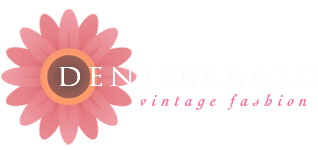In case you didn’t see the start of this last week: Each week I’m showcasing a fabric or fabric term from the new VFG Fabric Resource.
This week’s fabric is nonwoven felt, a fabric that may surprise some. For instance, did you know that the felt that is widely available in fabric and craft stores is not a real felt, but an imitation? That’s because genuine felt is made of wool fibers (more rarely fur fibers) and is much more expensive to produce.
Just this weekend I was talking with a vintage fabric store owner (Ethel of The Knittn’ Kitten in Portland, Oregon...a really neat lady and a great little shop!). She told me that she had been finding felt yardage at estate sales, and became aware that it was soft, springy, a little lustrous and of great quality. That’s when she knew she was finding real wool felt. If you haven’t felt it (no pun...) you are in for a treat.
Felt, nonwoven
Nonwoven felt is a fabric made in a process that involves fibers of wool or fur being subjected to moisture, heat, friction and pressure. The minute natural scales on the fibers cause them to tangle and mat while the heat and moisture shrink and thicken the fibers to form a dense fabric. Felting is the name of this process. Wool felt is probably the oldest fabric known to man, referenced in ancient writings and found in Bronze Age tombs.
Fine felts may use rabbit fur fibers, while the finest use beaver fur fibers. These fine felts are known for their use in hat making.
The fabric called felt which is currently widely available for crafting is actually an imitation; usually made of acrylic fibers and adhesives, no natural fibers are present. Other felts available are made of part wool. Half of the fibers must be natural for the fabric to felt.
Uses: Hats, bags, slippers, padding, crafts, and a wide range of household and industrial applications©Vintage Fashion Guild - Text by Margaret Wilds/denisebrain, photo by Hoyt Carter
Crafters know that felt does not ravel, so it can be cut and used without finishing its edges. Iconic 1950s poodle skirts were made of felt. Interestingly, wool and fur fibers are so capable of felting that even only 50% wool/fur fibers will entangle non-wool fibers sufficiently to produce genuine felt. Another interesting point: The soft matted nap surface of many wool fabrics is produced by the same method (heat, friction, moisture, pressure) in a process called fulling.
 |
| Dramatic late 30s stylized felt fedora in my web store |

